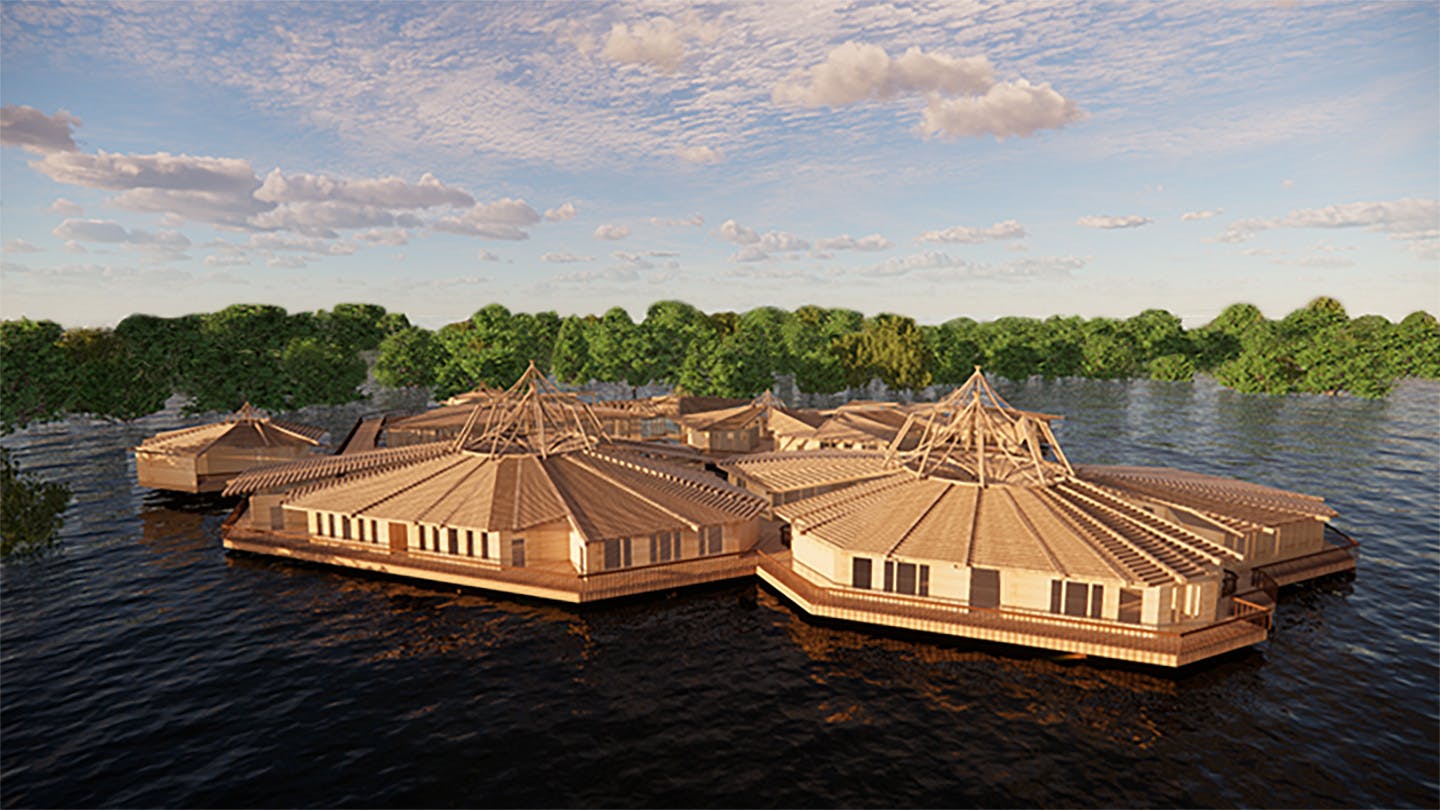Tonlé Sap Ecological Reclamation Center

Our project focuses on Siem Reap, Cambodia, a province that is home to approximately 8,100 people. Located in Siem Reap is the Tonle Sap Lake, one of the most biodiverse freshwater ecosystems in the world. We studied the local fishing communities living on the northwestern shore of the lake, whose cultures and annual rhythms have evolved in sync with the 10-meter (33-foot) rise and fall of the lake level, the flooding that characterizes the regular cycle of wet and dry seasons. The reverse of the water flow results in fish being dispersed upstream into the lake, building abundance.
The lake faces numerous threats, including overfishing, the effects of deforestation, pollution, and climate change. Its hydrological system has been disrupted by dams upstream on the Mekong River, causing the lake to shrink and negatively affecting the lake's ecosystems and the people who depend on it. Laws of the lake outlawing fishing created chaos and overfishing in some of the remaining areas. Fishing boundaries that were once owned by the kingdom were turned over to the community in an unorganized way, causing havoc. Facing heightened ecological and economic challenges, Cambodian fishers were forced to start bringing their children to work, causing them to miss school.
Our proposal focuses on four main areas. Building on the work of local organizations, we aim to 1) promote the education of children and adults; 2) provide resources for self-governance to enable the lake to be shared; 3) situate the growing tourist economy in ways that sustain the local culture; and 4) create a distribution hub for goods to support local residents facing intensifying droughts.